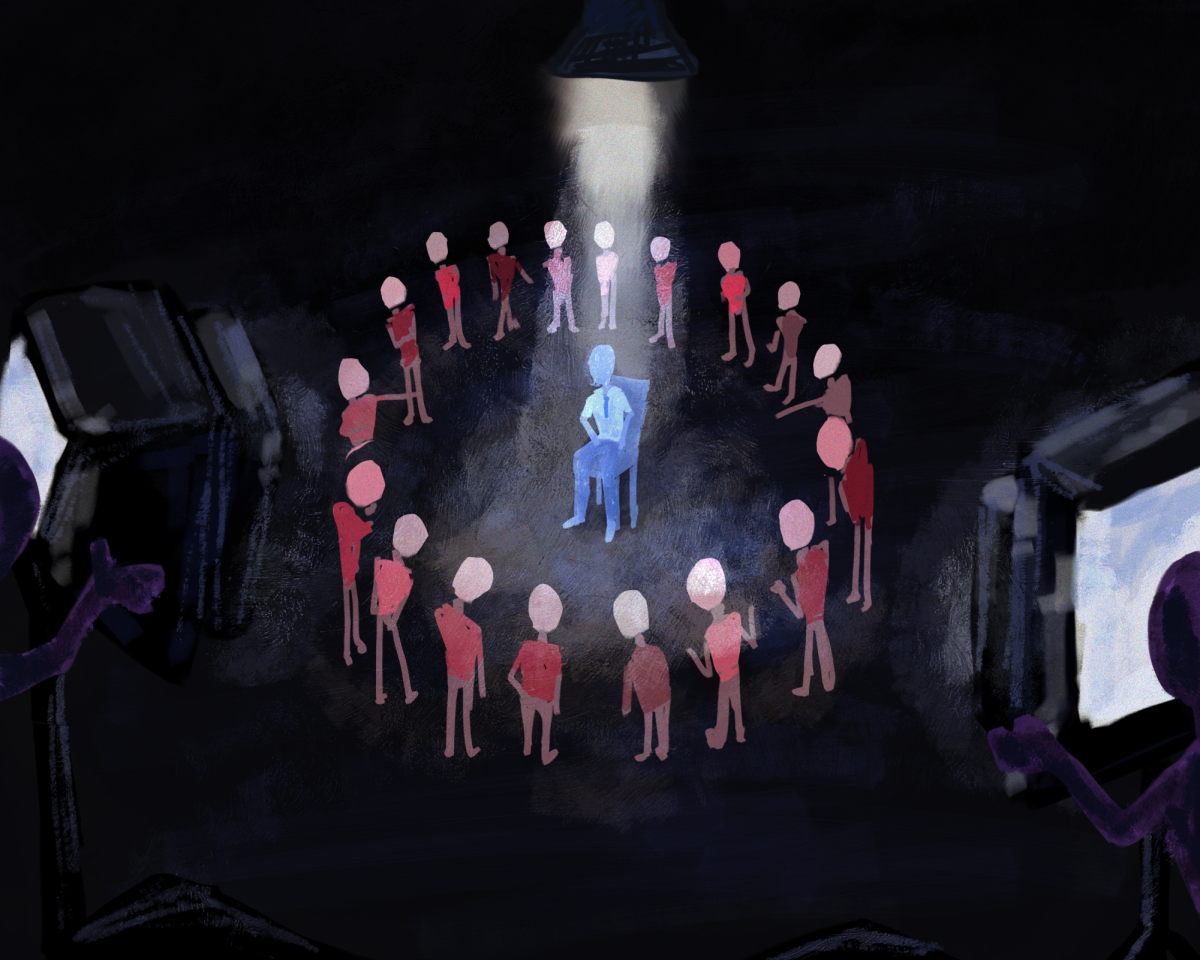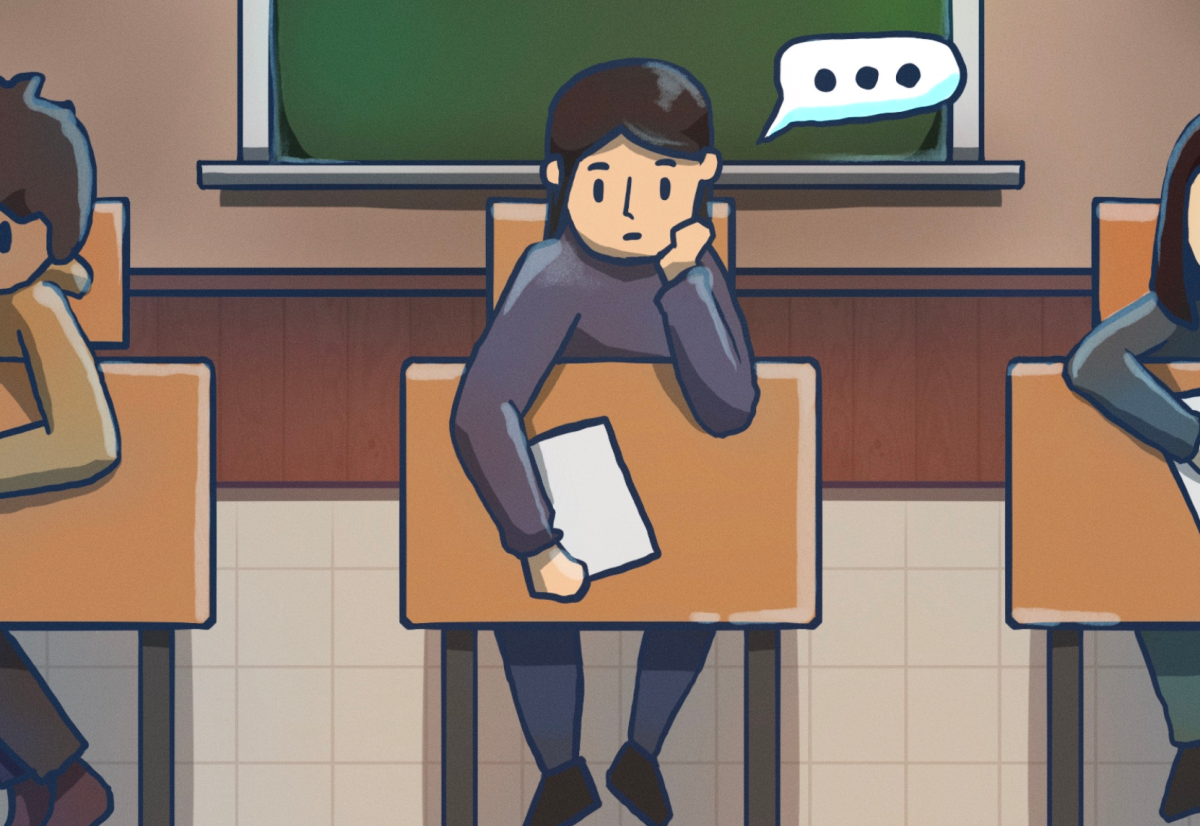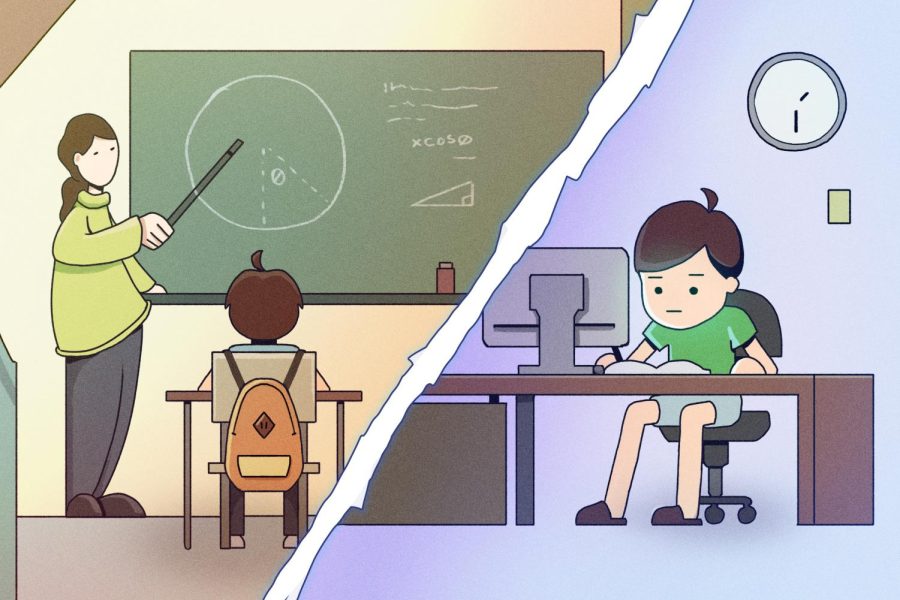From the online tools used in school to the hours spent at home scrolling through an abyss of videos, technology and internet usage are constantly in the foreground of everyday life for modern students.
However, the possibility that mass online consumption is changing today’s youth to a biological degree is not discussed enough — specifically the health effects it may have on future generations. The world would function in a more limited and restricted way without access to the internet, exemplified by the accessibility of communication and information today. However, in comparison to the dangerous effects this consumption could have, it’s important to consider whether a few laughs and time-killing videos are worth all the trouble. There’s no doubt that the brain adapts to the media it views. Therefore, we must pay closer attention to how much we consume and, more specifically, how we are affected by consumption.
In today’s climate, you can find youth hunched over a screen, causing them to spend too much time in awkward positions. Doctors have seen an increase in technology-related health problems, including “tech-neck,” a condition in which the C7 vertebrae, the bone at the top of the neck, begins to stick out, attributed to internet overconsumption. A 2018 NIH study on the effects of technology use on the body found that almost half of the test group — individuals who spent over three hours on technology or the internet a day — suffered from musculoskeletal problems.
While the physical effects of technology can be serious, the implications of the internet on the brain are even more devastating. Disturbing videos and imagery circulate on the internet every day. From trends on TikTok that show uncensored images of homicide scenes to digital pornography available in seconds, access to unsettling content is separated only by the space between one’s fingers and a keyboard. Such easy access to harmful media has created a culture of apathy towards content that should be deeply disturbing. Being incapable of processing feelings strips individuals of their empathy and reduces the brain to nothing more than a physical operating device, blurring the lines between people and robots.
Desensitization to violence and gore results in mental transformations enabling the brain to process even the most traumatic content. Habitually, images and videos at rapid speeds damage the prefrontal cortex, causing other symptoms such as irrational behavior and an increased risk for mental health issues.
A 2007 study conducted by the Columbia University Medical Center found that the amygdala — the part of the brain that controls hostile or impulsive behaviors — becomes temporarily suppressed after even a couple of seconds of violent media. This suppression emphasizes the direct connection between media consumption and the brain, as the more one consumes violent media, the more unresponsive the brain becomes. Mass consumption of such media can lead to periods where the brain no longer inhibits aggressive conduct.
The study also found that subjects who watched clips of violence showed heightened stimulation in brain areas is associated with controlling behaviors, suggesting that certain content could hinder an individual’s ability to separate mental and physical processing of media. In other words, the brain begins to bypass behavioral regulation, a vital safety net ensuring mental inputs do not become physical outputs.
The effect of watching violence on the brain mirrors the consumption of pornography. A 2011 report from NIH suggests the brains of those consuming excess amounts of pornography are akin to those of people who have suffered from strokes or tumors. The “hypofrontal syndrome” is a dysfunction that damages the part of the brain that controls systematic and calculated behaviors, referred to colloquially as the “braking system.” Losing the ability to control bad behaviors may sound absurd, but it is the neurological path humanity will follow if the consumption of harmful media isn’t monitored.
Vanderbilt University researcher Bridget Rubenking noted in an interview with ABC News that “disgust has evolved to compel our attention.” In the short period that violent media has been available to consume, the brain has already turned the instinctive reaction of repulsion to one of interest. Taking that into consideration, there is nothing to say that the brain won’t get altered even more in the next 100 years and eventually cause the brain to process violence or trauma incorrectly.
65% of the global population, along with 93% of the US population, use technology. It is not something that a select few partake in, and consumption on this level is bound to result in changes down the road. If mental health mirrors physical health in any way, it is imperative to consider the gradual and impactful effects technology could have. Evolution is constant, and disregarding these warning signs may be disastrous in the long run.

















gavin • Jan 8, 2024 at 12:19 pm
I think this is pretty good
Hillel Up Top Boss • Oct 13, 2023 at 10:16 pm
The writer has done a good job here discussing the pervasive influence of technology and internet usage on the lives of modern students. Highlights on their reliance on online tools for education and their extensive hours spent scrolling through videos at home are both interesting phenomena.
I couldn’t agree more.
Personally, I’m especially concerned about the desensitization to gore and violence which seems to be an innate source of interest/entertainment. When gore and violence presents itself in our everyday lives, it’s surprising how quickly we now reach for the tech in our pockets to memorialize the event. We are then just as quick to share that gore with any and all personal networks we have access to. How do the developing minds who receive this content process it?
Thank you to Alara for bringing this issue to her readers. It’s very well written and brings the points to the reader with the appropriate data to support her conclusions.
Be careful, I think The Washington Post is hiring.